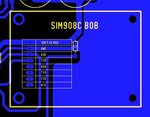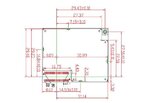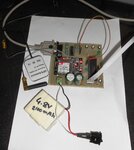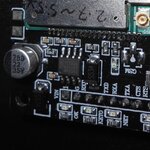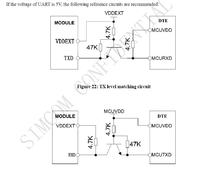Mithun_K_Das
Advanced Member level 3
- Joined
- Apr 24, 2010
- Messages
- 899
- Helped
- 24
- Reputation
- 48
- Reaction score
- 26
- Trophy points
- 1,318
- Location
- Dhaka, Bangladesh, Bangladesh
- Activity points
- 8,252
As the micro-controller works in 5V and the SIM300 GSM module works in 3.7V to 4.2V while the Tx of SIM300 is less than 3.3V as the datasheet says.
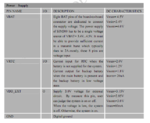

datasheet: included with this post as attachment.
I used PIC and SIM300 module to send SMS many times and it works clearly. But only problem is in reading any data. Is this due to the voltage level error? I mean the SIM is sending data at 3.3V range and the PIC is reading data at 5V range. Will it create any problem in data reading?
What I found in reading data with micro-controller is, it frequently miss characters and sometimes reads noise or blank. Although the simulation works fine and clear, no missing in data. That means that the program works fine. Only problem is in my hardware.
Here is the hardware I used in Data reading from SIM300cz with PIC micro-controller:
I didn't draw any schematic diagram, but I've the PCB layout.
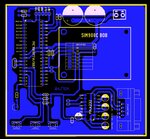
Also, A similar post was posted before.
Link: https://www.edaboard.com/threads/330732/
Today I found a project related with SMS reading from SIM module using micro-controller. They are using MAX232 in between the micro-controller and SIM module. Here is the link and their circuit diagram:

link: https://www.electronicshub.org/wire...onic_Notice_Board_using_GSM_Circuit_Principle
Is it ok to use MAX232 in this way or will it be harmful to the SIM module/GSM module?
Or it will work fine? As the voltage level error is solved...


datasheet: included with this post as attachment.
I used PIC and SIM300 module to send SMS many times and it works clearly. But only problem is in reading any data. Is this due to the voltage level error? I mean the SIM is sending data at 3.3V range and the PIC is reading data at 5V range. Will it create any problem in data reading?
What I found in reading data with micro-controller is, it frequently miss characters and sometimes reads noise or blank. Although the simulation works fine and clear, no missing in data. That means that the program works fine. Only problem is in my hardware.
Here is the hardware I used in Data reading from SIM300cz with PIC micro-controller:
I didn't draw any schematic diagram, but I've the PCB layout.

Also, A similar post was posted before.
Link: https://www.edaboard.com/threads/330732/
Today I found a project related with SMS reading from SIM module using micro-controller. They are using MAX232 in between the micro-controller and SIM module. Here is the link and their circuit diagram:

link: https://www.electronicshub.org/wire...onic_Notice_Board_using_GSM_Circuit_Principle
Is it ok to use MAX232 in this way or will it be harmful to the SIM module/GSM module?
Or it will work fine? As the voltage level error is solved...
Attachments
Last edited:
